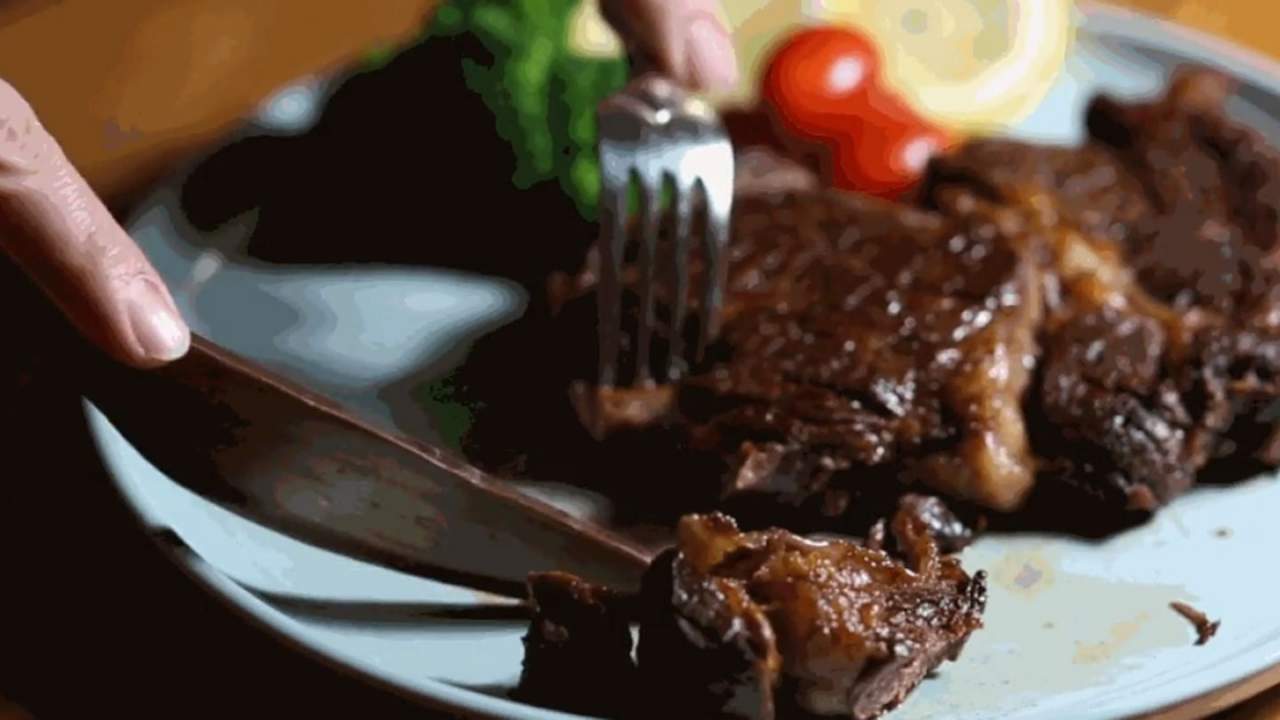The sharpest knives available are made of steel or ceramic. They are both materials that must be forged in furnaces at extreme temperatures. Now, researchers have developed a potentially more sustainable way to make sharp knives: using hardened wood. The method, presented on 20 October in the scientific journal Matter, makes wood 23 times harder, and a wooden knife nearly three times sharper than a stainless steel table knife.
“The knife cuts through a medium-rare steak easily, with similar performance to a table knife,” he says Teng Li, senior author of the study and materials scientist at the University of Maryland. Subsequently, the hardened wooden knife can be washed and reused, making it a promising alternative to disposable steel, ceramic and plastic knives. Don't you believe it? Take a look for yourself.
Li and his team also demonstrated that their material can also be used to produce wooden nails that are as sharp as steel nails, and also resistant to rust. A knife, a nail… very good. Are you saying that sooner or later they can't even pull out a parquet that doesn't get ruined or scratched? I hope so very much.
Why didn't they think about it before?
We've been working with wood for centuries: how come they only arrived at this method now? Well, first of all we have been working wood with compression and steam for centuries, and we haven't put much effort into trying different approaches. Only recently have we rediscovered the exceptional qualities of this material, which combined with our new ability to engineer it can achieve extraordinary results. Like, say, a transparent wood, or another wood stronger than concrete.
“Cellulose, the main component of wood, has a higher strength-to-density ratio than most engineered materials, such as ceramics, metals and polymers, but our current use of wood barely touches its full potential,” says Teng Li. We apparently put too little cellulose in wood: even wood used in construction contains only 40-50%: the rest is lignin, which acts as a binder.
From this point of view, the creation of this knife is just training. It helped researchers find ways to work wood by removing its "weaker" components without affecting the cellulose structure.
A knife to understand (in two steps)
“In the first step, we partially remove the lignin. Typically, the wood is very stiff, but after the lignin is removed it becomes soft, flexible and a little soft. In the second stage, we perform a hot press. We apply pressure and heat to chemically processed wood to densify and remove water.”
After the material is machined and sculpted into the desired shape, it is coated with mineral oil to extend its life. Cellulose tends to absorb water, so this coating preserves the sharpness of the knife during use and even when washed in the sink or dishwasher.
But how strong is it?
Using high-resolution microscopy, Li and his team examined the microstructure of the hardened wooden knife to determine the origin of its strength. “The strength of a piece of material is very sensitive to the size and density of defects, such as voids, channels or pits,” says Li. “The two-step process we are using significantly reduces defects in natural wood, erasing those imperfections and channels (which serve to transport water or other nutrients into the tree, ed.)”.
Two factors above all are definitely in favor. First: the ability to reuse and sharpen them many times. Second, it only takes 100 ° Celsius to process this wood (in a reusable chemical bath). To make a comparison, making ceramic takes thousands of degrees celsius.
This wood-hardening process has the potential to be more energy efficient and have a lower environmental impact than the production of other man-made materials, although more analysis is needed to say for sure.


